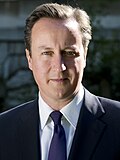2010 UK election
|
|
|||||||||||||||||||||||||||||||||||||||||||||||||
|
|||||||||||||||||||||||||||||||||||||||||||||||||
|
|
|||||||||||||||||||||||||||||||||||||||||||||||||
|
All 650 seats in the House of Commons 326 seats needed for a majority |
|||||||||||||||||||||||||||||||||||||||||||||||||
|---|---|---|---|---|---|---|---|---|---|---|---|---|---|---|---|---|---|---|---|---|---|---|---|---|---|---|---|---|---|---|---|---|---|---|---|---|---|---|---|---|---|---|---|---|---|---|---|---|---|
| Opinion polls | |||||||||||||||||||||||||||||||||||||||||||||||||
| Turnout | 65.1% ( |
||||||||||||||||||||||||||||||||||||||||||||||||
|
|||||||||||||||||||||||||||||||||||||||||||||||||

Colours denote the winning party, as shown in the main table of results
|
|||||||||||||||||||||||||||||||||||||||||||||||||
|
|||||||||||||||||||||||||||||||||||||||||||||||||
The 2010 United Kingdom general election was held on Thursday, 6 May 2010, with 45,597,461 registered voters entitled to vote to elect members to the House of Commons. The election took place in 650 constituencies across the United Kingdom under the first-past-the-post system. None of the parties achieved the 326 seats needed for an overall majority. The Conservative Party, led by David Cameron, won the largest number of votes and seats, but still fell 20 seats short. This resulted in a hung parliament where no party was able to command a majority in the House of Commons. This was only the second general election since the Second World War to return a hung parliament, the first being the February 1974 election. Unlike in 1974, the potential for a hung parliament had this time been widely considered and predicted, and both the country and politicians were better prepared for the constitutional process that would follow such a result. The coalition government that was subsequently formed was the first coalition in British history to eventuate directly from an election outcome. The hung parliament came about in spite of the Conservatives managing both a higher vote total and higher share of the vote than the previous Labour government had done in 2005, when it secured a comfortable majority.
Coalition talks began immediately between the Conservatives and the Liberal Democrats, and lasted for five days. There was an aborted attempt to put together a Labour/Liberal Democrat coalition (although other smaller parties would have been required to make up the ten seats they lacked for a majority). To facilitate this, Gordon Brown announced on the evening of Monday 10 May that he would resign as Leader of the Labour Party. Realising that a deal with the Conservatives was within reach, the next day on Tuesday 11 May, Brown announced his resignation as Prime Minister, marking the end of 13 years of Labour government. This was accepted by Queen Elizabeth II, who then invited David Cameron to form a government in her name and become Prime Minister. Just after midnight on 12 May, the Liberal Democrats emerged from a meeting of their Parliamentary party and Federal Executive to announce that the coalition deal had been "approved overwhelmingly", sealing a coalition government of Conservatives and Liberal Democrats.
...
Wikipedia



